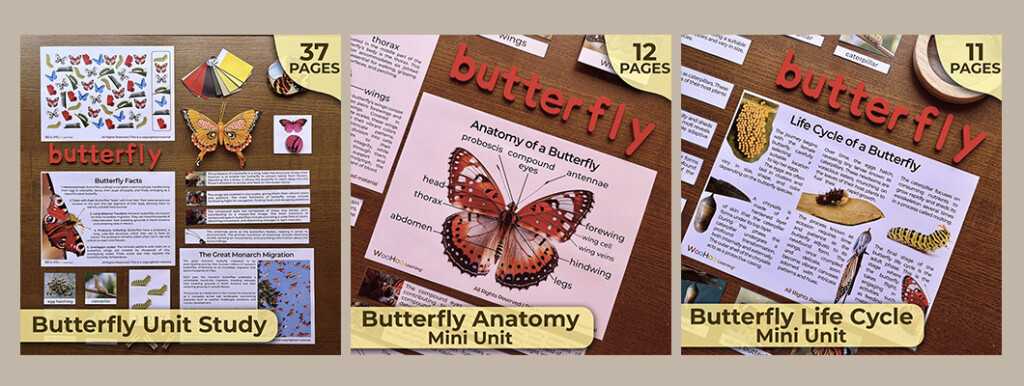With the arrival of the warmer seasons of the year, spring and summer, flowers bloom and everything becomes filled with colors. One consequence of this phenomenon is that everything becomes full of butterflies, as they have plenty of food around them, pollen. Butterflies are a fundamental insect in nature because they help promote pollination and prevent pests. Unfortunately, many species of butterflies are in danger of extinction, which represents a great loss for all living beings on our planet. For this reason, it is very important to raise awareness among new generations about the importance of this insect and its care, as well as the importance of caring for nature and living beings in general.
If you, like me, are passionate about the Montessori methodology, its approach to teaching, and its learning environment, you’ll love working with my butterfly unit. The way I use my units with my students is very experiential—I bring real objects into the classroom so they can touch, observe, and explore them. This approach, which focuses on the child, encourages learning through experimentation and discovery. Next, I’ll explain how to use this unit with your students.
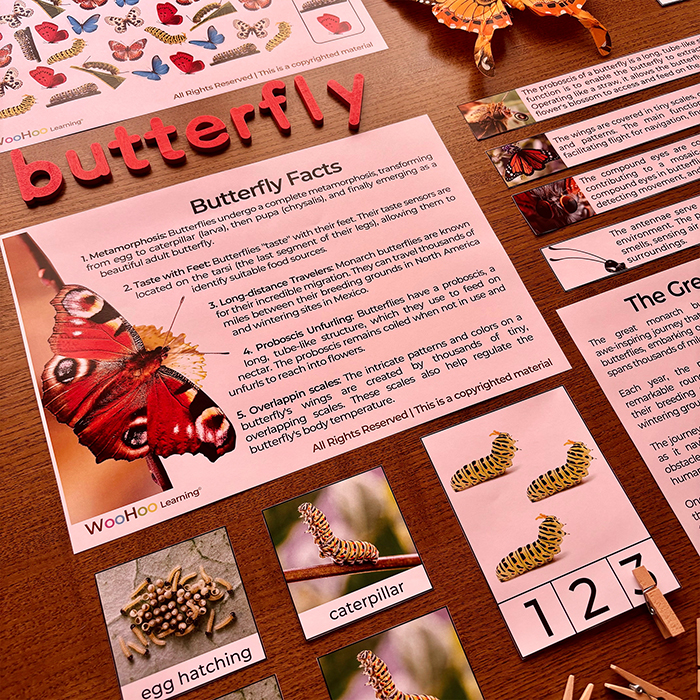
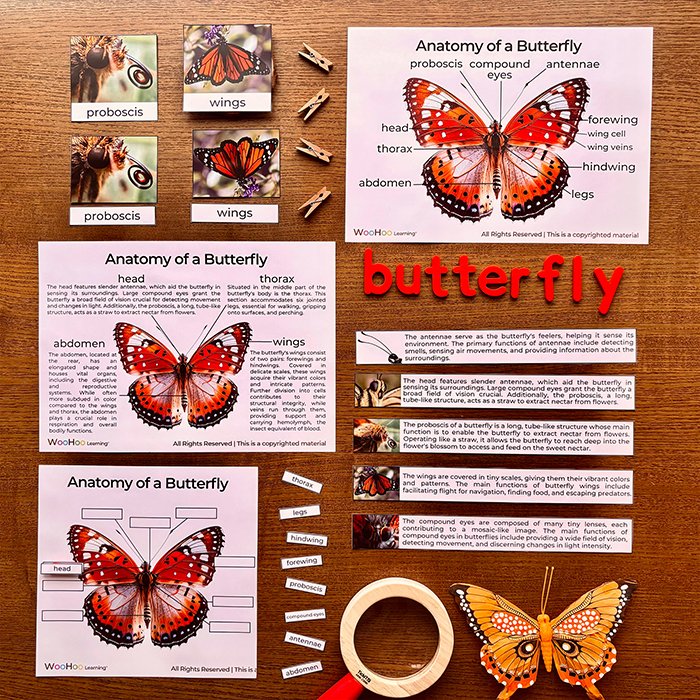
First, I recommend starting with the butterfly anatomy section. If possible, bring a realistic butterfly figurine (or more) into your class so children can examine it up close—touch it, explore it, and engage with it. Before sharing any information, introduce the butterfly figurine with some guiding questions: “What do you know about butterflies?”, “Do they always have the same form, or is there an evolution?”, “How many species of butterflies exist?”.
After the hands-on exploration of the butterfly, you can move on to learning about its different parts: head, proboscis, compound eyes, antennae, forewing, hindwing, thorax, abdomen, and legs. The labeled poster will be a great tool to introduce these parts. Then, you can use the 3-part cards to help students work on vocabulary and specific definitions.
"At some given moment it happens that the child becomes deeply interested in a piece of work; we see it in the expression on his face, his intense concentration, the devotion to the exercise"
The Discovery of the Child, Maria Montessori
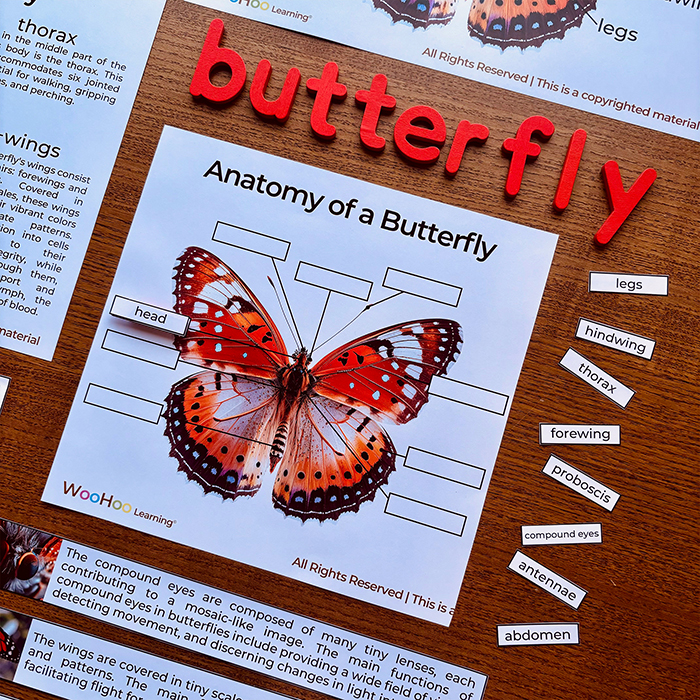
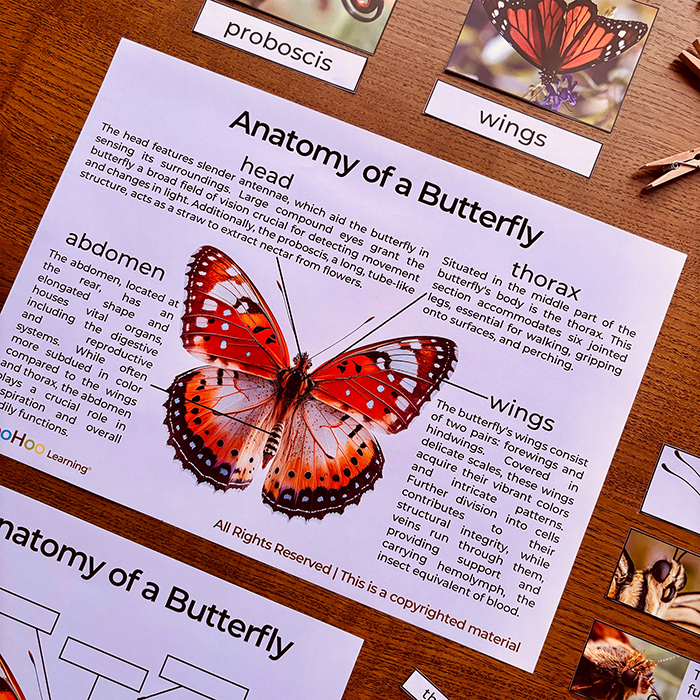
Once the children are familiar with the butterfly and its anatomy, it’s time to delve into the life cycle of this insect. You can start this section by asking questions like, “Do you know how a butterfly is formed?”, “Are you familiar with the process of metamorphosis?”, “How are its colors formed?”. These questions will help students prepare to learn about the six stages of the butterfly life cycle: laying eggs, egg hatching, caterpillar, chrysalis, eclosion, and adult butterfly. To support this learning, you can use the definition cards, the 3-part cards, and the 4-part cards with definitions.
Here are some of the elements I’ve used to accompany this unit and their purchase links, in case you’re interested:
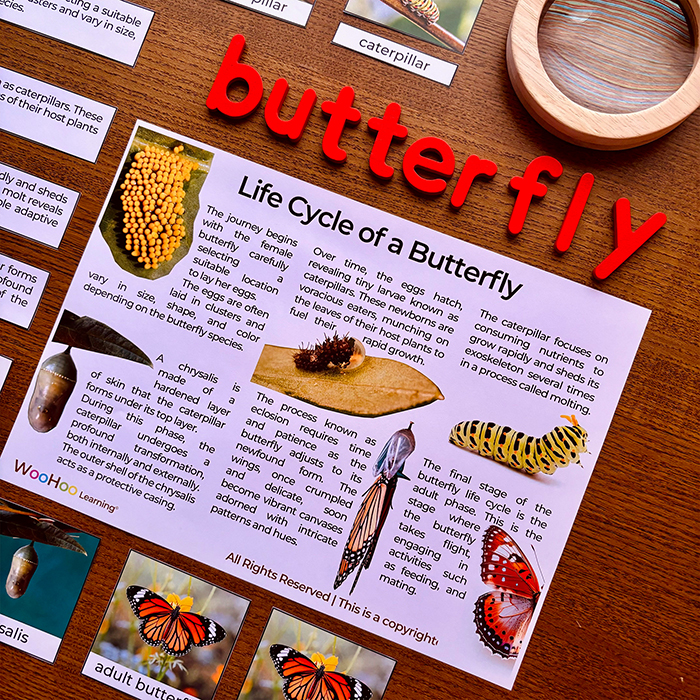
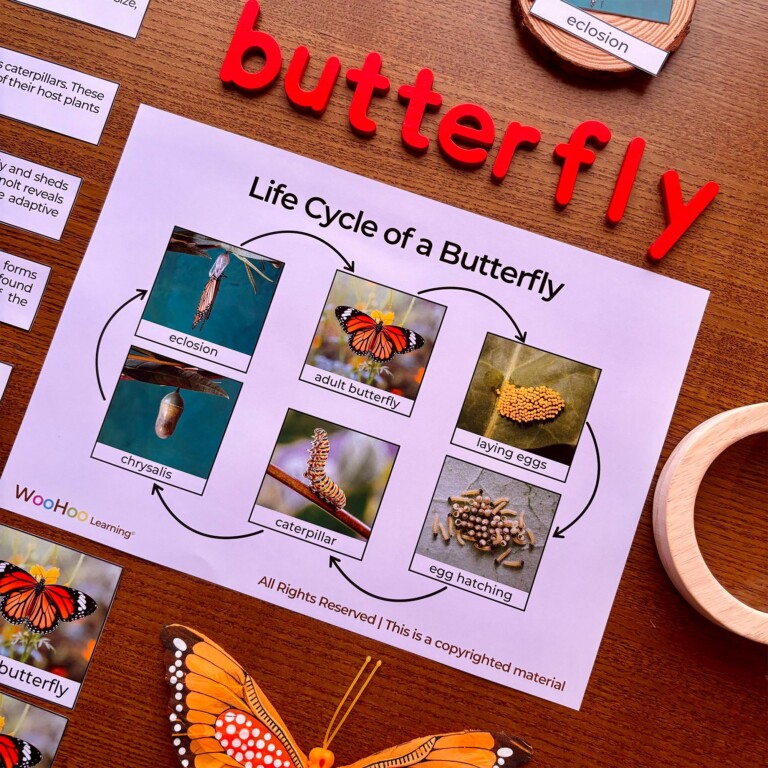
After understanding the anatomy and life cycle of the buttefly, the children will be ready to learn about the pollination process. As always, I suggest starting with some thought-provoking questions: “Do you know what pollination is?”, “What do butterflies eat?”, “Where is pollen found?”. You might also bring some nectar to the classroom so students can see how it looks.
Once our students have learned about the anatomy of the butterfly, its life cycle, and the pollination process, we can move on to activities included in the unit or explore more about this insect.
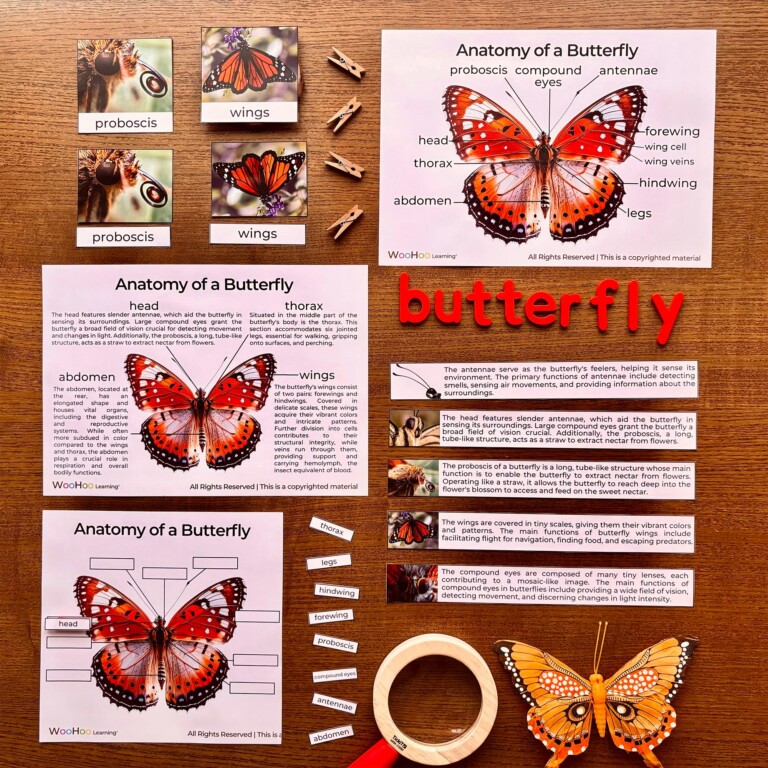
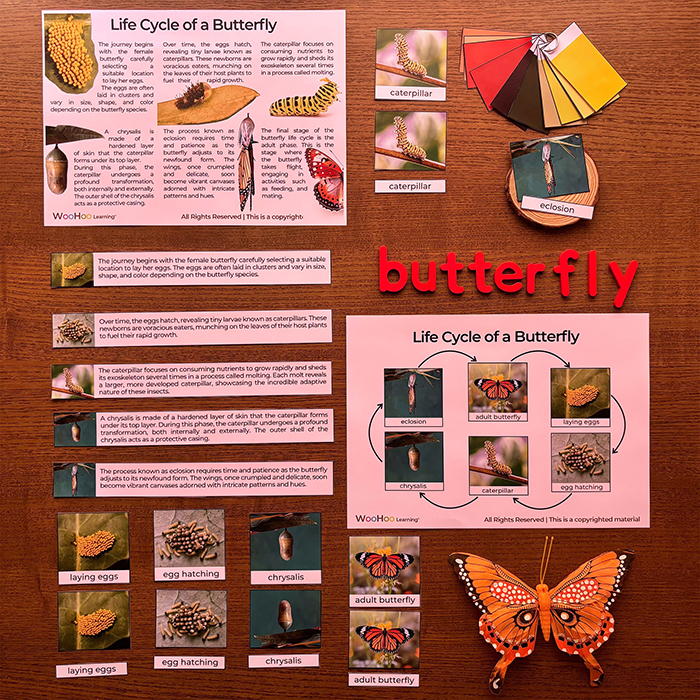
If you’re interested in purchasing my butterfly unit study, you can find direct access to it below. If you only want a part of the unit, don’t worry, that’s also possible. In total, there are 3 different units available: the complete butterfly unit, the butterfly life cycle unit, and the butterfly anatomy unit.
The complete butterfly unit consists of 37 pages and contains all kinds of information about butterflies, including a color pantone, butteflies migration, interesting facts, life cycle, anatomy, and other information. The buttefly anatomy unit has 12 pages and includes posters, 3-part cards, vocabulary cards, and activities. Finally, the butterfly life cycle unit has 11 pages and includes posters, 3-part cards, vocabulary cards, and activities.
*If you feel more comfortable making your purchase on well-known platforms, you can also find my products on other e-commerce sites. Here are the links to my Etsy store and my Teachers Pay Teachers store.



